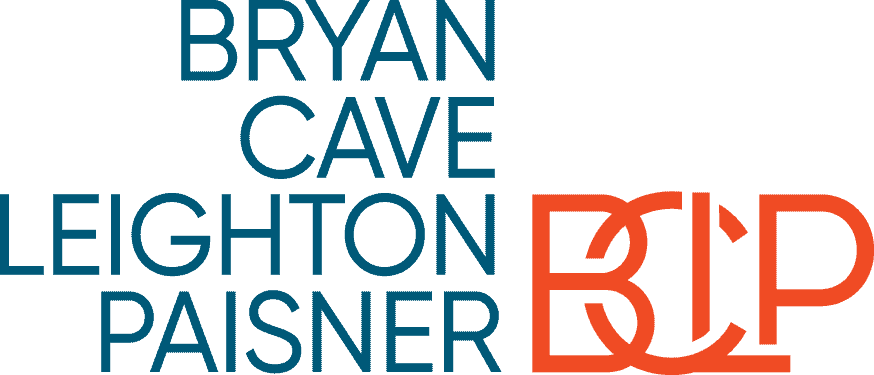
Self Exam: Improve the Health of the Bank and its Standing with Regulators
Brought to you by Bryan Cave Leighton Paisner

 Doctors recommend various self exams to catch disease early, so it can be treated before it’s too late. As it turns out, a self examination can be good for the health of a bank as well. My colleagues and I recommend that our banking clients and friends undertake a regular self examination in order to identify potential internal and external challenges that the bank may face. As discussed more thoroughly below, these self examinations can also be very helpful when the bank’s doctor (your friendly regulator) comes in for a check-up.
Doctors recommend various self exams to catch disease early, so it can be treated before it’s too late. As it turns out, a self examination can be good for the health of a bank as well. My colleagues and I recommend that our banking clients and friends undertake a regular self examination in order to identify potential internal and external challenges that the bank may face. As discussed more thoroughly below, these self examinations can also be very helpful when the bank’s doctor (your friendly regulator) comes in for a check-up.
Enlist internal audit
To initiate the self examination, the audit committee of the bank’s board of directors should charge management with preparing a report that outlines the current and projected status of the bank’s key areas of risk. Ideally, the bank’s internal audit function will take the lead in performing the examination and preparing the related report. In order to maximize the value of this report, the audit committee should direct management to deliver the report at least 60 days prior to the bank’s next scheduled regulatory exam. The self examination report, in its most basic form, should cover the areas that are the focus of the bank’s regulators: CAMELS (capital, asset quality, management, earnings, liquidity and sensitivity to market risk). The report should also address any key areas of risk identified by the directors.
Analyze your market
In addition to analyzing the typical CAMELS components and other areas of risk, a very important part of the self examination process is a market study. The report should present facts, trends and projections related to the market area in order to define the opportunities and challenges being faced by the bank’s customers. While many bank directors have a good feel for market trends, we have found that this data, when presented with specific facts and trends, can inform the board’s discussions of a variety of topics a great deal. It can also provide the bank with support for dealing with its examiners, who conduct their own market analysis prior to each examination.
Evaluate the bank
In the report, management should report on the current status of the various risk areas (for example, capital levels and levels of problem assets), comparisons to peers and steps being taken to improve the current status. While it may be difficult for the officers of the bank to evaluate the bank’s management in the way that the bank’s examiners would, the management portion of the report should address the organizational chart of the bank to ensure that appropriate resources are allocated to each of the bank’s functions. After reviewing the draft report, the audit committee can evaluate the need for further analysis before presenting the final report to the full board. This report should give the audit committee, and eventually the full board, good perspective on the condition of the bank and the need for corrective actions.
Use self exam in multiple ways
The final self examination report should be clearly organized and comprehensive, though concise. The report can be used to color a variety of discussions that the board may have in the normal course of overseeing the bank’s operations. It can serve as the basis for strategic planning discussions in analyzing the opportunities in the bank’s market and the adequacy of the bank’s earnings. It can also be a guide to more basic discussions, such as the pricing of deposits, based on the information related to the bank’s liquidity and opportunities for loan growth. Essentially, the report provides a comprehensive guide to the current and projected health of the bank that the bank’s directors can use for a quick point of reference in making their decisions.
Prepare a presentation for regulators
In addition to business planning purposes, the self examination can be a key tool in preparing for a regulatory examination. Using the results of the self examination, management should prepare a presentation for the examiners that highlights the bank’s key metrics, areas of progress and actions taken to address areas of concern. The market analysis portion of the self examination can be a key component of this presentation. While the bank’s examiners should be generally familiar with the bank’s market, they will not have the specific and direct perspective that the self examination report can provide. Using this market data, the bank can provide factual, documented support for its projections and for any actions it is taking. This presentation should be conveyed to the bank’s examiners at the initial meeting related to the exam, at which a representative of the board should be present. By alerting the bank’s examiners to the focus of the board on the bank’s condition and the steps being taken to improve the bank’s condition, the bank increases the likelihood that the examiners will conclude that the board is performing its duties and that the bank’s internal controls are adequate.
The self examination report can be a very useful tool for bank directors. At its best, it will provide a roadmap for making key strategic decisions. In its most basic form, it documents the board’s focus on oversight of the bank. While producing such a report will use management resources, much of the analysis that should be included in the report can be extracted from management’s ongoing reports to the board. Producing and discussing the self examination report is a healthy exercise, and the bank’s examiners will agree.
Originally published on January 11, 2012.


